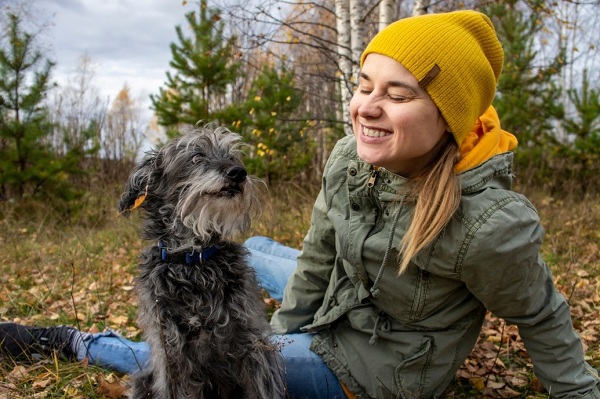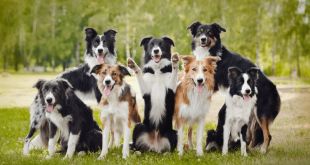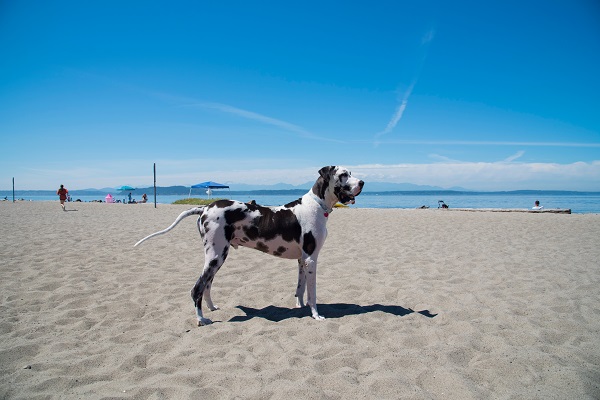A puppy today will grow into a senior dog tomorrow. Time flies in a jiffy. So, even before they turn old, you should know which food is ideal for the senior dogs. And if you are the owner of a dog who has already turned old, you have no time to lose. You have to go through this article minutely. With the growing age, their fitness level diminishes.
They stop playing. The consequence is they start gaining weight and become obese. Vets recommend that a twenty to fifty percent reduction in the diet is good for them. So, you must prepare your canine friend’s diet properly to get the proper nutrition without gaining much weight.
Best Dog Food For Senior Dogs
Senior dogs require a regular supply of nutrients to sustain their health. Hence, their diet should consist of a combination of food that includes the following:
1. Carbohydrates/Fiber
Carbs present in plants provide sugar and starch. It helps develop energy and fiber. Fiber is an essential ingredient that helps in bowel processes. Hence, almost fifty percent of dog diet contains this. Rice, peas, potatoes, and grains are some food sources that contain carbohydrates.
Compared to protein, carbs are cheaper. Due to this, food manufacturers prefer simple carbs more to increase volume to lower the cost. Good quality food contains complex type carbs to provide energy and fiber.
2. Protein
Protein is imperative for senior dogs. Moreover, protein is responsible for a variety of reasons. These include hair growth, developing hormones, strengthening muscles, curing wounds, and controlling the metabolic rate. There are lots of food that can be essential protein sources. So, what are those foods that have protein presence in abundance?
These include Chicken, Duck, Turkey, Beef, Lamb, Liver, Eggs, Fish, Milk, and Milk-based products. Protein is even in some grains like Rice, Corn, Wheat, and Barley. However, this protein in grains is not as rich as animal-related products.
But they are very effective in combination with others. Every adult dog requires at least nineteen to twenty-seven percent protein daily.
3. Fat
Fat’s main contribution is adding taste to the food. But it has many beneficial effects too. For older dogs, it produces energy and makes them feel good to eat the taste of the food. Fats are disintegrated into various vitamins such as Vitamin A, D, C, and Vitamin K. Fat provides folic acids that keep the dog’s coat well maintained and shiny.
Dogs require at least 10 to 20 percent fat each day. Devoid of fatty acid, the fur looks dull. But be mindful of your dog’s weight. If you see that your dog is gaining weight, prefer to give it low-calorie fat.
4. Minerals and Vitamins
Vitamin is essential to maintain the metabolic rate, increase growth and functionality, support the immune system, and help absorb minerals. Vitamins are available in natural resources in good quantity. Food supplements are also rich in vitamins and minerals. Water-soluble vitamin D and vitamin C need to be removed from the body every day.
Proper vitamin balance is essential for a dog’s health. For perfect development and operation, minerals are required: zinc, Calcium, Phosphorus, Nitrate, and Iron. They maintain the salt balance and keep the bone and teeth perfect. An equilibrium of vitamin and minerals keep the body healthy.
With the growing age, the need for nutrients keeps changing for dogs. That doesn’t mean every old dog needs dietary changes. Some may continue with the same dietary habits. FDA has guidelines for the senior dog’s diet followed by the food makers.
FDA-guided food manufacturer mentions the ingredient details and addresses on their level, which you should never miss to study before purchasing. They mention the feeding details like how much you should feed and even the best time and age for feeding. It also details the percentage of fat, protein, fiber and moister, minerals, and vitamins.
It also furnishes the amount of additive in it. Food process details are mentioned sometimes. They mention the balanced percentage of nutrition. If you have any issues with the packaged food, you can call their toll-free number to lodge any complaints.
5. Escalation in Protein
In the case of older dogs, vets recommend that heavy calorie protein is quite a significant part of their diet to perpetuate equilibrium. In some cases, their requirement is more than the younger ones. It is best to consult with a vet about the suitable protein for your dogs and its amount.
6. Low amount of carbs and fiber
It is crucial to consult your vet about a fiber-rich diet since it is tough to assimilate for aged dogs.
7. Fat according to the necessity
Fat is a complex element in an old dog’s diet. It needs to be given considering the BMI of the dog. The dogs obtaining weight need minimal fat food, while those with continuous slanting bodies need a heavy concentration of fat.
8. Quantity of Sodium
Rather than cardiac issues, renal issues, or hypertension, it is better not to vary the quantity of sodium in old dog food. At least thirty-three to four hundred twelve mg. of sodium per kcal. is required.
9. Keep Low in Phosphorus
For those dogs suffering from kidney issues, it will be better to stop giving phosphorus-related food.
To conclude
Senior dogs need extra care. Going light on their food is one option to take good care of their health. Aging dogs need food that is easy to digest. You can cut back on the fats and include nutrients and carbs that work well for your pet.
Rice with chicken extracts can be a good combination that serves nutrients and flavors. You don’t switch to a new diet. All you need is to make a few changes to meet the dietary needs of your loving pet.

 DogExpress
DogExpress


















 in Chandigarh, India.
in Chandigarh, India. 
